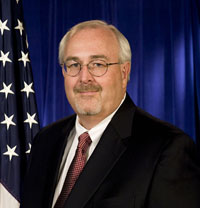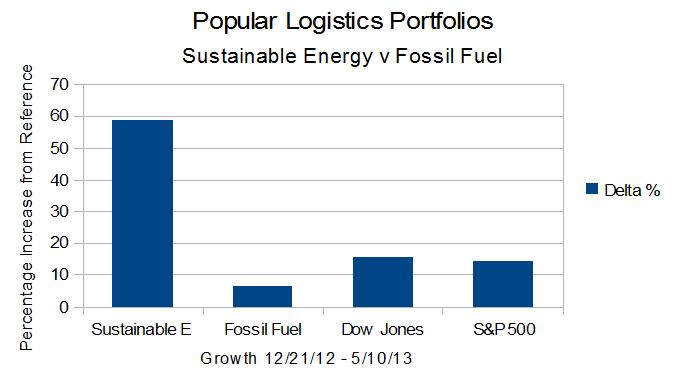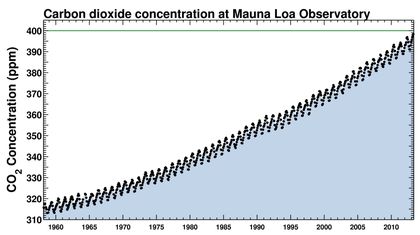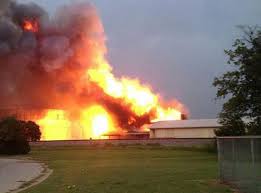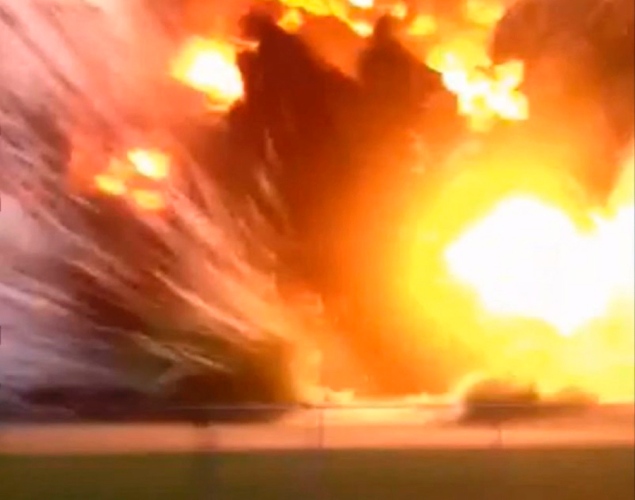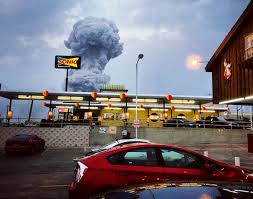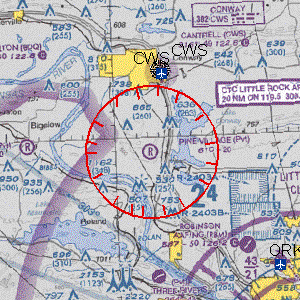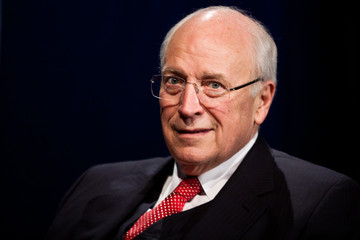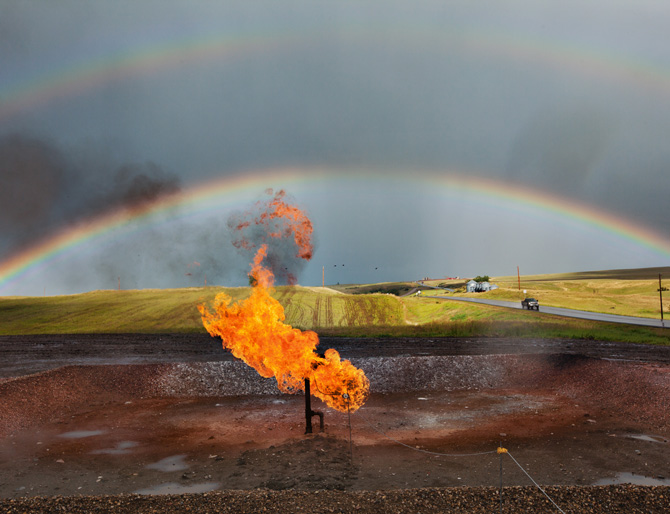Both of the shirts pictured above are “Reaction” brand shirts from “Kenneth Cole.”
Continue reading
Category Archives: Connecting the Dots
Leave Improvisation to Actors, Comedians, and Musicians – and Develop Coherent Disaster & Risk Policies
After bombs exploded at the Boston Marathon, April 15, 2013, the FBI and the Boston Police tracked down the alleged terrorists, who in the course of their flight killed a cop at MIT, hijacked a Mercedes, fired and threw bombs at police, and tried to ram the police with the stolen car. Continue reading
Popular Logistics Energy Portfolios: The Trend Continues.
The trend is clear – if 4 1/2 months is enough to establish a trend – the Sustainable Energy portfolio is up 58.78% from 12/21/12 while the Fossil Fuel portfolio is only up 6.71%. The Dow is up 15.49% and the S&P 500 is up 14.24% in that same period.
Is it because Atmospheric Carbon Dioxide has reached 400 PPM? (NPR / NY Times) Is Wall Street reacting because Goldman Sachs and JP Morgan, and other investment banks and hedge funds are hiring analysts from Greenpeace or people like me with MBAs in Sustainability from Marlboro, the Presidio, and the Bainbridge Institute? Continue reading
Atmospheric CO2: 400 PPM on May 9, 2013
Atmospheric CO2 hit 400 PPM on Thursday, May 9, 2013, as measured at the Koana Loa observatory. This is an increase of 85 ppm, 26.98%, from 1960. This is why Bill McKibben, of 350.org, calls our planet Eaarth. It’s weather, climate, and ecology are different than the one those of us who are over 30 – or over 12 – were born on. National Geographic, summed it up well, here:
“Greenhouse gas highest since the Pliocene, when sea levels were higher and the Earth was warmer.”
The scientists are taking the data – increased atmospheric carbon dioxide – and asking two questions:
- Why is it increasing?
- What are the likely effects?
The journalists and bloggers, like Geoffrey Lean, at the Telegraph, asks, here, “Did the contentious global warming ‘hockey stick’ graph get it right?” He could have asked “Did the scientists – and the environmentalists – get it right? And if so, shouldn’t we stop burning fossil fuels?”
FAA dismissing weather spotters who aid AirTraffic controllers
FAA plan to terminate airport weather observers raises travel safety concerns – FAA plan to terminate airport weather observers raises travel safety concerns (WaPo)
Garry’s email
In the spirit of making Guv’mint less of a burden on its o’er taxed
citizens, the FAA has opined that traffic controllers can look out the
window as well as weather observers, so you only have to pay one of the
bunch.
But on a nice, hot, July afternoon along the Atlantic shore, with the
cumulonimbus topping off at 20K and warm air advection shooting up to
the tropopause, you think JFK/LGA/EWR air traffic controllers will
have the time to plot developing wind shear? When fish-tailing planes
are keeping them – oh – somewhat preoccupied?
Sometimes, a little redundancy is OK.
FAA plan to terminate airport weather observers raises travel safety concerns
(Washington Post – Jason Samenow)
GRO
PS – On the other hand, if the air traffic controllers can’t cope,
they’ll just have to close airports more often, so airlines have to
pick up the tab on diverted equipment and crews, and passengers on the
cost of being at the wrong airport, so all of the money that FAA saves
gets spent in spades in the private sector. Plus some. I’m sure
everyone will be pleased…
Jon’s comment:
Frontline: “Top Secret America” After the Boston Bombings
Frontline, the WGBH/PBS investigative news show, will air “Top Secret America” After the Boston Bombings tonight on PBS stations. Local station listings can be found here.
Have the hundreds of billions of dollars spent since Sept. 11 on counterterrorism efforts in America made us safer?
In response to the recent terrorist bombings in Boston, FRONTLINE will take a definitive look at that timely, urgent question next Tuesday, April 30, in Top Secret America – 9/11 to the Boston Bombings, an updated version of our film which originally aired in September 2011. Pulitzer Prize-winning reporter Dana Priest traces the journey from 9/11 to the marathon bombings, examines efforts to improve information sharing among federal agencies tasked with keeping us safe and investigates the secret history of the 12-year battle against terrorism.
National Incident Map – quick visual overview
Everything You Need To Know About Ricin, The Poison Mailed To President Obama | Popular Science
Everything You Need To Know About Ricin, The Poison Mailed To President ObamaRicin is one of the most poisonous substances on Earth, its scarily easy to make, and somebody is mailing it to the President and at least one U.S. senator. What it is, how it works, and more, inside.By Dan Nosowitz
via Everything You Need To Know About Ricin, The Poison Mailed To President Obama | Popular Science.
35 Dead in Fire and Explosion at Texas Fertilizer Warehouse. Others Missing.
West, Texas. April 18, 2013. An explosion during a fire at a fertilizer plant in West, Texas killed 35, including at least 10 firefighters and EMS responders. At this time, 6 other EMS responders are missing. If not found alive, and the outlook appears grim, the death toll will jump to 41, including at least 16 First Responders. This is a devastating loss of first responders in a community of 2600 and a tragic loss to the families and friends of those killed. 160 people were injured, according to CNN, here.
This news clip, from CBS, reports, “The explosion, with the force of a small earthquake, was felt 15 miles away. The blast knocked out windows half-a-mile away.”
West Fertilizer Company may have been negligent – that’s for the courts to decide.Ricardo Lopez, writing in the LA Times, reported, “West Fertilizer Co. paid $5,250 last year to the U.S. Pipeline and Hazardous Materials Safety Administration, PHMSA, over violations discovered in 2011.” CBS also reported that the last EPA inspection was 1985 and that West Fertilizer Co was fined in 2006 for failure to implement a disaster plan.
The Houston Chronicle, reported, here, that
- West Fertilizer was cited in 2006 for lacking a permit,
- An intermediate school near the plant has been evacuated “more than once” due to fumes and pollution from the plant,
- The plant had not been inspected by Occupational Health and Safety Administration, OSHA in more than 10 years,
- West Fertilizer, incorporated in Texas in May 2004, did not get its state air pollution permit until 2007 after a complaint was filed about foul odors from the facility.
The Chronicle, also reported, here, that Donald Adair, the owner of Adair Grain and West Fertilizer, issued a statement Friday afternoon expressing sympathy,
My heart is broken with grief for the tragic losses to so many families in our community. I know that everyone has been deeply affected by this incident. Loved ones have been injured or killed. Homes have been damaged or destroyed. Our hearts go out to everyone who has suffered.
I was devastated to learn that we lost one of our employees in the explosion. He bravely responded to the fire at the facility as a volunteer firefighter. I will never forget his bravery and his sacrifice, or that of his colleagues who rushed to the trouble.
The citizens of Texas and of the United States need to decide if the regulatory regimes are inadequate. Government safety regulations are like government regulations prohibiting drunk driving. Drunk drivers don’t mean to do any harm, they just want to get home after having a good time. Remember that canonical accounting rule: “Assets = Liabilities + Owners’ Equity.” Business owners want to make money selling valuable products, and just want to add a few dollars to “Owners’ Equity” perhaps by subtracting a few dollars from the category of “Safety & Emergency Preparedness” in the “Liabilities,” column.
Final questions:
If fertilizer is so explosive why is it good to use on our lawns and use it to grow our food? What alternatives are available?
Mr. Adair sounds like an alcoholic who has just learned that he has killed someone after driving while intoxicated and crashing into another car. If we prosecute drunk drivers for killing by accident while under the influence, or creating what Justice Holmes called “A clear and present danger,” shouldn’t we prosecute owners of corporations for killing by accident, or creating a clear and present danger, especially when, as appears to be the case here, there is a pattern of disregard for regulation?
The staff, budgets, and authority of regulatory and enforcement agencies such as PHMSA, OSHA, and the EPA have been cut under the administrations of President George W. Bush and by the House of Representatives under the leadership of John Boehner. Should we continue to cut the staff and budgets of PHMSA, OSHA, EPA and other regulatory and enforcement agencies or should we rethink our approach to law enforcement and regulation?
Exxon Manages No-Fly Zone Over Arkansas Oil Spill
An Exxon pipe leaked, flooding 500,000 gallons of crude oil onto Mayflower, Arkansas. Exxon is in charge of a No Fly Zone in the vicinity of the spill.
- Do independent observers who want to witness the tar sands spill disaster have to ask Exxon’s permission?
- Why Is Exxon Controlling the No-Fly Zone Over Arkansas Tar Sands Spill?
- Because it wants to? Because it can?
Because … the FAA put an Exxon employee in charge of a no-fly zone over Exxon’s latest oil spill.
Contact the FAA at (866) 835-5322 and the White House at (202) 456-1111 to ask Why is an oil company managing a no-fly-zone over an oil spill it caused? Why is a publicly traded for-profit oil company that caused an oil spill managing air traffic in the vicinity of the oil spill?
Charles Komanoff
Charles Komanoff is widely known for his work as an energy-policy analyst, transport economist and environmental activist in New York City. He “re-founded” NYC’s bike-advocacy group Transportation Alternatives in the 1980s, co-founded the pedestrian-rights group Right Of Way in the 1990s, and wrote or edited the landmark reports Subsidies for Traffic, The Bicycle Blueprint, and Killed By Automobile. Earlier, Komanoff gained prominence for deconstructing the disastrous economics of nuclear power in the United States as author-researcher and expert witness for states and municipalities across the U.S. He wrote his visionary oil-saving report, Ending The Oil Age, after witnessing at close range the traumatic events of 9/11. Komanoff’s current work includes modeling and advocacy for traffic pricing and free transit in New York City in partnership with renowned civic activist Ted Kheel. He also directs the Carbon Tax Center, a clearinghouse for information, research and advocacy on behalf of revenue-neutral carbon taxes to address the climate crisis. A math-and-economics graduate of Harvard, Komanoff lives with his wife and two sons in lower Manhattan.11 Hanover Square21st FloorNYC 10005kea@igc.org
via Charles Komanoff.
Fracking – Above the Law
Energy From Shale says,
“Spent or used fracturing fluids are normally recovered at the initial stage of well production and recycled in a closed system for future use or disposed of under regulation, either by surface discharge where authorized under the Clean Water Act or by injection into Class II wells
as authorized under the Safe Drinking Water Act. Regulation may also allow recovered fracturing fluids to be disposed of at appropriate commercial facilities. Not all fracturing fluid returns to the surface. Over the life of the well, some is left behind and confined by thousands of feet of rock layers.”
This is a very misleading statement, given that Congress, in 2005, passed the “Halliburton Rule,” which exempted Fracking from regulation by the Clean Water Act and the Safe Drinking Water Act.
As noted by the Environmental Defense Center, here, and Source Watch, here, Fracking is actually exempt from Eight (8) major federal regulations.
- The Clean Water Act , due to the “Halliburton loophole” pushed through by former Vice-President/former Halliburton CEO Dick Cheney, exempting corporations from revealing the chemicals used in fracking fluid;
- The Safe Drinking Water Act, also due to the “Halliburton loophole”.
- The Toxic Release Inventory under the Emergency Planning and Community Right-to-Know Act.
- The Resource Conservation and Recovery Act, which exempts fracking from federal regulations pertaining to hazardous waste;
- The Comprehensive Environmental Response, Compensation, and Liability Act;
- The Clean Air Act,
- The National Environmental Policy Act; and
- The Superfund law, which requires that polluters remediate for carcinogens like benzene released into the environment, except if they come from oil or gas;
As noted here, Bill McKibben, of 350.org, R. P. Siegel, who co-wrote Vapor Trails and writes for Triple Pundit, Al Gore, and many others, including myself, who think about global warming and climate change and see the challenges presented by our need for energy and the potential of sustainable energy suggest that it would be better to use wind, solar, geothermal, and other fuel free systems, and to manufacture fuel from sewage, garbage, agricultural waste and algae than to dig fossil fuels – and heavy metals – out of the ground – and in so doing severely damage the biosphere.
But I think McKibben, Siegel, Gore, and Cheney would agree with me that “Fracking” is aptly named.
–
Part 3 in a Series.
- L. Furman, 3/12/13, Hydro Fracturing, aka Fracking, Dirty & Ugly, but What Choice do we Have?
- L. Furman, 3/14/13, Fracking,Best Practices versus Current Practice
- L. Furman, 3/18/13, Fracking – Above the Law
–
An analyst with Popular Logistics, Lawrence J. Furman holds a Bachelor’s in Biology, and an MBA in “Managing for Sustainability” from Marlboro College, Vermont. He also has experience in information technology. He can be reached at ‘L Furman 97” at G Mail.
Fracking, Best Practices versus Current Practice
EnergyFromShale.org, the industry website, says,
“The oil and natural gas production industry uses these lessons to develop best practices to minimize the environmental and societal impacts associated with development.”
The image above from National Geographic, The New Oil Landscape, March, 2013, suggests that the ideal is far from the reality. And even if the “Frackers” used “Best Practices”, “Best Practices” for a carbon source of energy is not “Best Practice” for an sustainable economy. Efficient use of energy obtained via solar, wind, geothermal, marine hydro and in stream hydro are best practices. Fracking doesn’t even come close.
But even if extraction was done in such as manner as to isolate all heavy metals, carcinogens, radioisotopes and other pollutants from the biosphere, the whole point of hydro-fracturing is to extract carbon from beneath the earth, in order to burn it and transfer carbon dioxide – a greenhouse gas – into the atmosphere.
Bill McKibben, of 350.org, R. P. Siegel, who co-wrote Vapor Trails and writes for Triple Pundit, Al Gore, who won the popular vote for US President in 2000, and many others, including myself, who think about global warming and climate change and see the challenges presented by our need for energy and the potential of clean, renewable, sustainable energy suggest that it would be better to use wind, solar, geothermal, and other fuel free systems, and to manufacture fuel from sewage, garbage, agricultural waste and algae than to dig fossil fuels – and heavy metals – out of the ground – and in so doing severely damage the biosphere.
But I think we agree that “Fracking” is aptly named.
–
Part 2 in a Series.
- L. Furman, 3/12/13, Hydro Fracturing, aka Fracking, Dirty & Ugly, but What Choice do we Have?
- L. Furman, 3/14/13, Fracking, Best Practices versus Current Practice
—
An analyst with Popular Logistics, Lawrence J. Furman holds a Bachelor’s in Biology, an MBA in “Managing for Sustainability” from Marlboro College, experience with information technology. He can be reached at ‘L Furman 97” @ G Mail.
Antibiotic Resistance Poses ‘Catastrophic Threat’ To Medicine, Says Britain’s Top Health Official
Sally Davies, the chief medical officer for England, said global action is needed to fight antibiotic, or antimicrobial, resistance and fill a drug "discovery void" by researching and developing new medicines to treat emerging, mutating infections.
Only a handful of new antibiotics have been developed and brought to market in the past few decades, and it is a race against time to find more, as bacterial infections increasingly evolve into "superbugs" resistant to existing drugs.
"Antimicrobial resistance poses a catastrophic threat. If we don’t act now, any one of us could go into hospital in 20 years for minor surgery and die because of an ordinary infection that can’t be treated by antibiotics," Davies told reporters as she published a report on infectious disease.
"And routine operations like hip replacements or organ transplants could be deadly because of the risk of infection."
One of the best known superbugs, MRSA, is alone estimated to kill around 19,000 people every year in the United States – far more than HIV and AIDS – and a similar number in Europe.
via Antibiotic Resistance Poses 'Catastrophic Threat' To Medicine, Says Britain's Top Health Official.
Sequestration illuminates absence of long-term, coherent risk policies
Our national policy for disaster recovery and rebuilding – putting aside, for the moment, risk assessment, mitigation, planning, and response – is effectively no policy. We make it up as we go along. Did victims of terrorism on September 10, 2001, or beforehand receive compensation? Did airlines before 9/11 get special legislation absolving them of liability? Even assuming that there is a legitimate question about the etiology of Ground Zero responders’ illnesses, wouldn’t a reasonable and compassionate country willingly support dying and seriously ill responders and their families – rather than stalling, essentially starving them out? James Zadroga, The James Zadroga 9/11 Health and Compensation Act allocated $4.2 billion to create the World Trade Center Health Program; the legislation was signed in January 2011; Zadroga died in January, 2006. Then, as now, partisan legislative politics delayed the matter.

